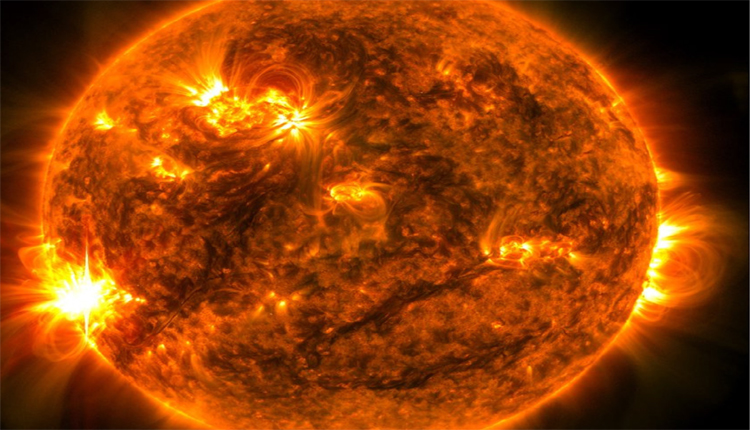NewDelhi: The scientific community is on high alert as the Sun appears poised to undergo a massive explosion, potentially triggering a fierce solar storm that could wreak havoc on Earth’s infrastructure. The US space agency NASA has issued a global alert, urging preparedness for the impending cosmic event.
Scientists warn that the Sun’s imminent explosion could severely disrupt Earth’s magnetic field, leading to widespread radio and electricity blackouts. The resulting disturbances may also cause mobile, computer, and internet services to stall. Additionally, both terrestrial and marine environments could face the brunt of the storm, with potential storms and earthquakes threatening coastal regions and sea vessels.
The Indian Space Research Organization (ISRO) is closely monitoring solar activities from its state-of-the-art centre in Ladakh. According to the latest updates from ISRO, a significant solar explosion is imminent, necessitating heightened vigilance to protect Indian satellites from potential damage caused by the impending solar storm.
Dr. Annapurni Subramanian, Director of the Indian Institute of Astrophysics, elaborated on the phenomenon, stating, “The explosion of the Sun is driven by the intense heat generated from a complex interplay of particles, energy, magnetic fields, and materials. Following the explosion, a solar storm can emanate at speeds ranging from 250 to 3,000 kilometers per hour, posing substantial risks to Earth.”
Media reports indicate that October has already seen heightened solar activity, marked by two massive solar flares designated as X7 and X9. These explosions, classified as coronal mass ejections (CMEs), are the most powerful the Sun has produced in seven years. The X9 flare, in particular, is the strongest observed since the previous major eruption. Both solar flares are currently traveling towards Earth, with their immense heat expected to trigger another significant solar explosion.
The ensuing solar storm, anticipated to be classified as a Geomagnetic Storm (G3), could have profound effects on Earth’s satellite orbits, potentially disrupting communications and navigation systems. Moreover, the storm is likely to produce spectacular auroras, offering a rare and colourful light show in the Northern Hemisphere.
NASA officials have reiterated the urgency of the situation, emphasizing the need for international cooperation to mitigate the potential impacts of the solar storm. “We must remain vigilant and take proactive measures to safeguard our technological infrastructure,” a NASA spokesperson stated.
ISRO has advised all satellite operators to implement protective measures and monitor their equipment closely to prevent damage. The organisation is also collaborating with global space agencies to track the storm’s progression and provide timely updates.
As the world braces for the possible solar explosion, experts are urging individuals and businesses to prepare for potential disruptions. This includes safeguarding electronic devices, backing up critical data, and having contingency plans in place to manage any prolonged outages.
The scientific community remains optimistic that early warnings and coordinated efforts can mitigate the adverse effects of the solar storm. However, the unprecedented scale of the impending event underscores the critical need for robust space weather monitoring and response strategies.



Comments are closed.